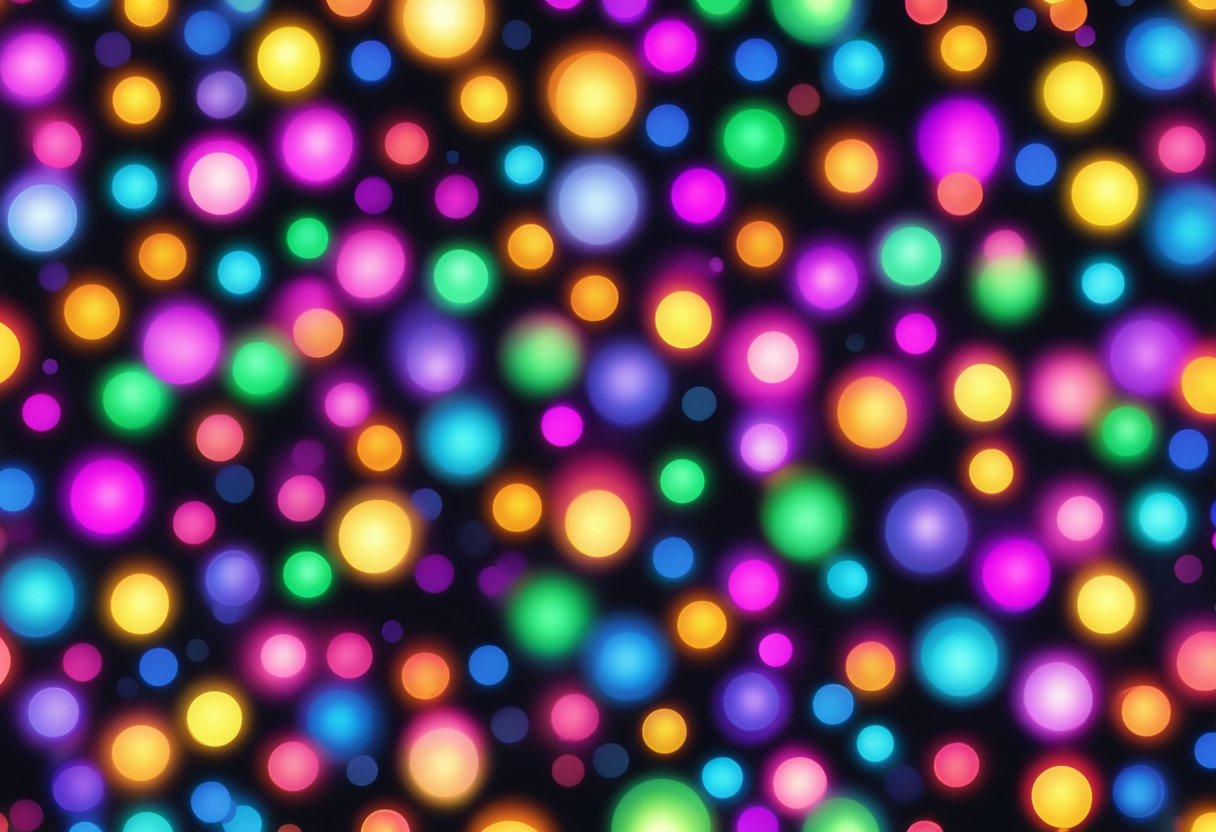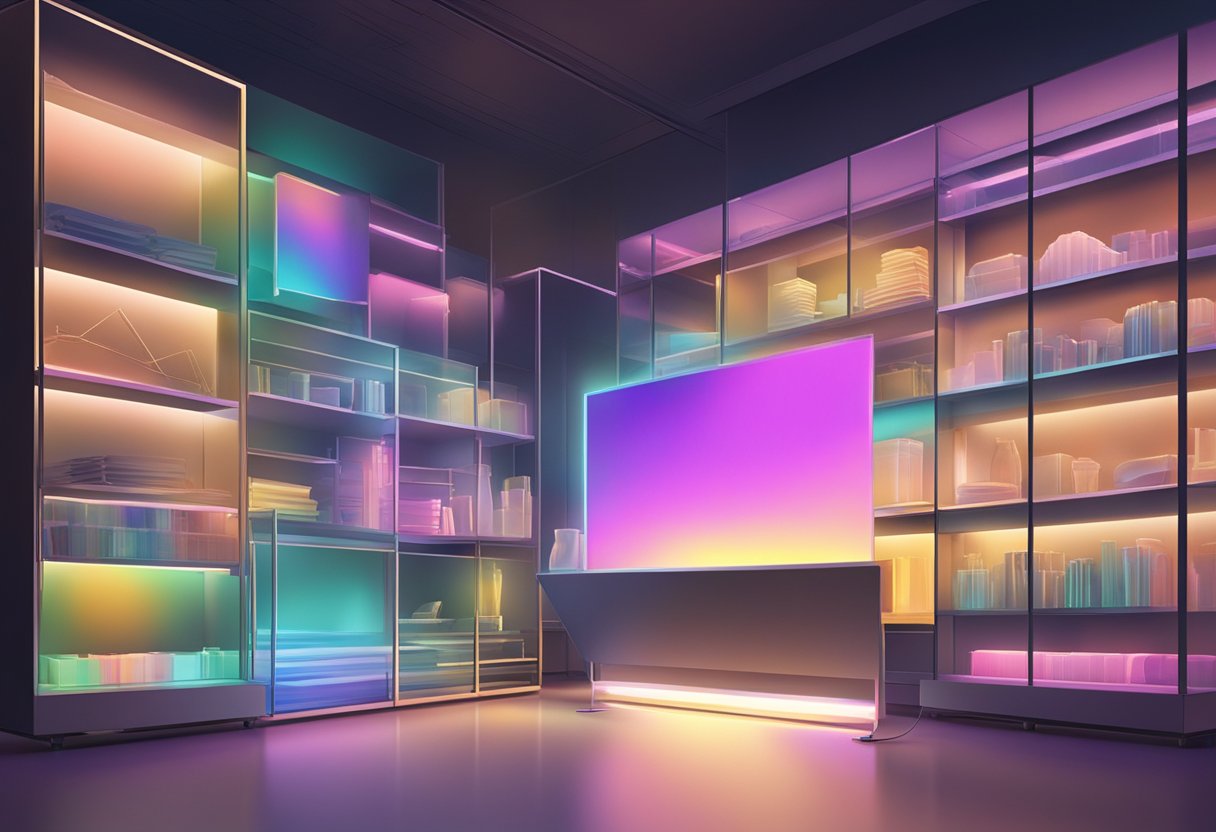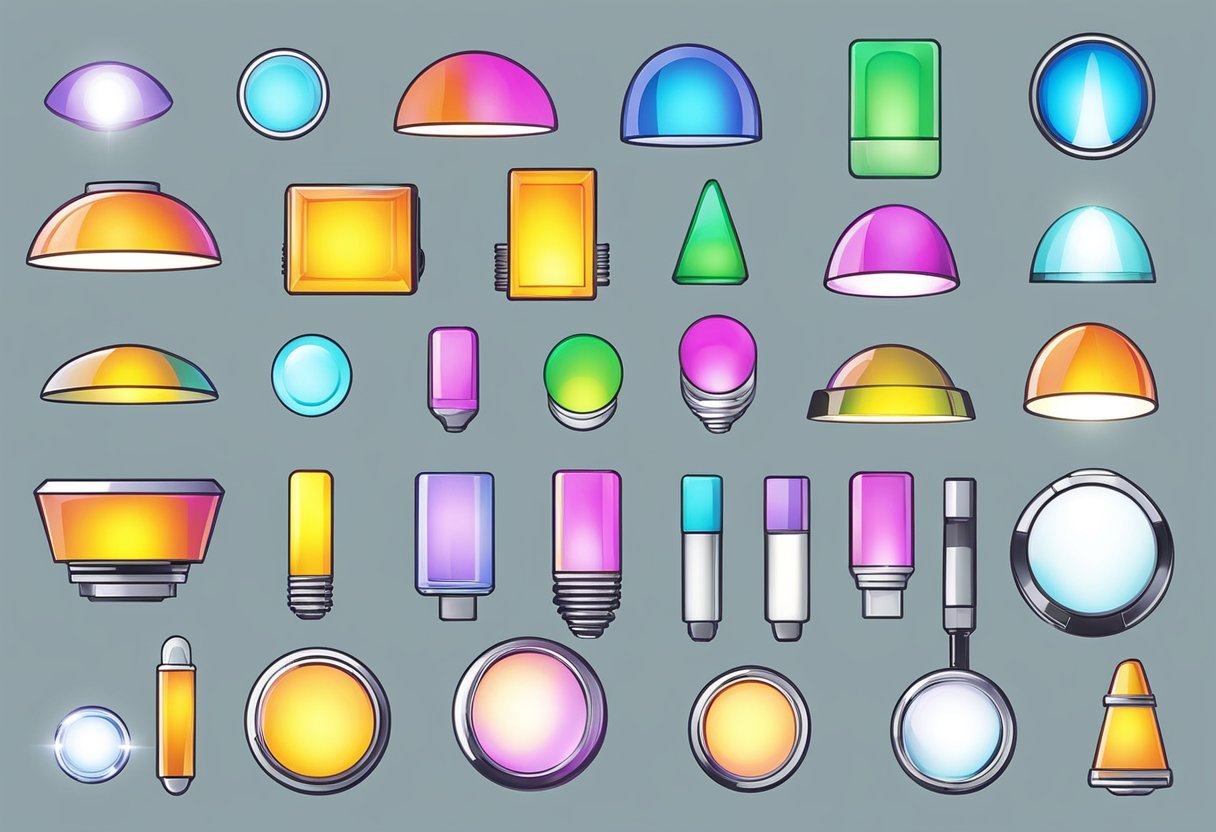Contact
Write to Us And We Would Be Happy to Advise You.
Do you have any questions, or would you like to speak directly with a representative?
By peter
If you’re looking for a way to add some ambiance to your living space, LED lights for backlighting might be just the thing you need. LED lights are energy-efficient, long-lasting, and versatile, making them an excellent choice for a variety of lighting applications. Backlighting with LED lights is a popular way to create a warm, inviting atmosphere in your home, office, or commercial space.

LED lights for backlighting can be used in a variety of ways to enhance the look and feel of any room. For example, you can use LED strips to create a soft, warm glow behind your TV or computer monitor, which can help reduce eye strain and make it easier to see the screen. You can also use LED lights to highlight artwork, photos, or other decorative elements in your home, creating a focal point that draws the eye and adds visual interest to the space.
Overall, LED lights for backlighting are an affordable, efficient, and stylish way to add some ambiance to your living space. Whether you’re looking to create a cozy reading nook, highlight artwork, or simply add some warmth to your home, LED lights can help you achieve your goals. With so many different options available, it’s easy to find the perfect LED lights to suit your needs and your budget.

If you’re looking for an energy-efficient and long-lasting way to light up your space, LED backlighting might be the perfect solution for you. LED backlighting is a type of lighting that uses light-emitting diodes (LEDs) to provide illumination. LEDs are small, energy-efficient, and long-lasting, making them a great choice for backlighting applications.
One of the main benefits of LED backlighting is its energy efficiency. LEDs use less energy than traditional incandescent bulbs, which means that they can help you save money on your energy bills. In addition, LEDs have a longer lifespan than incandescent bulbs, which means that you’ll need to replace them less often.
Another benefit of LED backlighting is its versatility. LEDs come in a wide range of colors and brightness levels, which means that you can customize your backlighting to suit your needs. For example, if you want a warm, cozy ambiance, you can choose LEDs with a lower color temperature. If you want a bright, vibrant atmosphere, you can choose LEDs with a higher color temperature.
LED backlighting is also easy to install and maintain. LEDs are small and lightweight, which means that they can be easily installed in a variety of locations. In addition, LEDs don’t require any special maintenance, which means that you can enjoy your backlighting without worrying about replacing bulbs or other components.
Overall, LED backlighting is a great choice for anyone who wants an energy-efficient, long-lasting, and versatile lighting solution. Whether you’re looking to create a warm, cozy atmosphere or a bright, vibrant one, LED backlighting can help you achieve your goals.

When it comes to LED lights for backlighting, there are three main types to consider: strip lights, edge-lit LEDs, and array LEDs.
Strip lights are a popular choice for backlighting due to their flexibility and ease of installation. They consist of a long, thin strip of LEDs that can be cut to size and attached to a surface using adhesive tape or clips. Strip lights come in a variety of colors and brightness levels, making them suitable for a range of backlighting applications.
Edge-lit LEDs are another popular choice for backlighting. They consist of a series of LEDs that are mounted along the edge of a panel or display, with light diffusing material used to spread the light evenly across the surface. Edge-lit LEDs are often used in thin displays, such as TVs and computer monitors, due to their low profile and energy efficiency.
Array LEDs are a newer type of LED light for backlighting that offer improved color accuracy and brightness compared to other types of LEDs. They consist of a grid of small LEDs that are individually controlled, allowing for precise color and brightness adjustments. Array LEDs are often used in high-end displays, such as professional-grade monitors and digital signage.
When choosing an LED light for backlighting, consider the specific requirements of your application, including the size and shape of the display, desired brightness and color accuracy, and budget. With the range of options available, there is sure to be an LED light that meets your needs.
When installing LED lights for backlighting, there are two primary techniques you can use: surface mounting and recessed mounting. Each technique has its own advantages and disadvantages, so it’s important to choose the right one for your specific needs.
Surface mounting is a popular technique for installing LED lights for backlighting because it’s easy and doesn’t require any special tools or skills. With surface mounting, the LED lights are simply attached to the surface of the wall or object you want to backlight using adhesive strips or clips.
One advantage of surface mounting is that it’s relatively quick and easy to do. You don’t need to cut any holes in the wall or make any other modifications to the surface you’re mounting the LED lights on. However, one disadvantage of surface mounting is that the LED lights can be more visible, which may not be desirable if you want a more subtle backlighting effect.
Recessed mounting is another popular technique for installing LED lights for backlighting. With this technique, the LED lights are installed inside a small hole that’s cut into the surface of the wall or object you want to backlight. The hole is then covered with a trim piece that hides the LED lights from view.
One advantage of recessed mounting is that it creates a more subtle backlighting effect because the LED lights are hidden from view. This can be desirable if you want a more sophisticated or elegant look. However, one disadvantage of recessed mounting is that it’s more difficult and time-consuming to do than surface mounting. You need to cut a hole in the wall or object you want to backlight, which can be tricky if you’re not experienced with DIY projects. Additionally, you need to make sure that the trim piece you use to cover the hole fits perfectly, which can be challenging.
Overall, both surface mounting and recessed mounting are effective techniques for installing LED lights for backlighting. The technique you choose will depend on your specific needs and preferences.
When it comes to selecting the right LED lights for backlighting, you need to consider a few factors. Here are some things to keep in mind:
The brightness of LED lights is measured in lumens. The higher the lumens, the brighter the light. If you want your LED backlighting to be comparable to a 60-watt incandescent, go for an 800 lumen light. However, keep in mind that brightness is not the only factor to consider. You also need to think about the color temperature.
Color temperature is measured in Kelvin (K). The lower the number, the warmer the light, and the higher the number, the cooler the light. For backlighting, you generally want a cooler light, around 6000K. This will give you a bright, white light that will make your images pop.
LED lights are known for their energy efficiency. They use less energy than traditional incandescent bulbs and last longer. When selecting LED lights for backlighting, look for ones that are Energy Star certified. This means they meet strict energy efficiency guidelines set by the U.S. Environmental Protection Agency.
In summary, when selecting LED lights for backlighting, you need to consider lumens, color temperature, and energy efficiency. By keeping these factors in mind, you can select the right LED lights for your needs.
LED backlighting is a versatile lighting solution that can be used for various applications. Here are some common applications of LED backlighting:
LED backlighting is widely used in commercial settings such as retail stores, restaurants, and offices. LED light panels can be used to create unique lighting effects that enhance the ambiance of the space. LED backlighting can also be used for advertising purposes, such as backlit signs and lightboxes. In addition, LED backlighting is energy-efficient and can help businesses save money on energy bills.
LED backlighting is also a popular choice for residential lighting. LED light strips can be used to create unique lighting effects in homes, such as under-cabinet lighting in kitchens or accent lighting in living rooms. LED backlighting is also commonly used for home theater systems, as it can create a cinema-like atmosphere in your home.
LED backlighting is also a popular choice for creative projects. LED light strips can be used to create unique lighting effects in art installations, sculptures, and other creative projects. LED backlighting is also commonly used in DIY projects, such as creating custom lighting fixtures or backlit wall art.
LED backlighting is a versatile and energy-efficient lighting solution that can be used for various applications. Whether you’re looking to enhance the ambiance of a commercial space, add unique lighting effects to your home, or create a one-of-a-kind art installation, LED backlighting is a great choice.
LED lights for backlighting are known for their long lifespan and low maintenance. However, like any electronic device, they can still experience issues. Here are some troubleshooting tips to help you maintain your LED lights:
First, check the power source. Make sure your LED lights are properly plugged in and that the outlet is functioning correctly. If you are using a dimmer switch, make sure it is compatible with your LED lights. Using the wrong dimmer switch can cause flickering or even damage to your LED lights.
Dirt and dust can accumulate on the surface of your LED lights, which can reduce their brightness and lifespan. To clean your LED lights, turn them off and wait for them to cool down. Then, use a soft cloth or brush to gently wipe away any dirt or dust. Avoid using water or cleaning solutions, as they can damage the LED lights.
If one or more of your LED lights are not working, it may be due to a faulty diode. To troubleshoot this issue, you can use a multimeter to test each LED light. If you find a faulty LED light, you can easily replace it with a new one.
LED lights can overheat if they are not properly ventilated. Make sure your LED lights have enough space around them to allow for proper airflow. If you are using your LED lights in a confined space, consider installing a cooling system to prevent overheating.
By following these simple troubleshooting and maintenance tips, you can extend the lifespan of your LED lights and ensure they are functioning properly.
Do you have any questions, or would you like to speak directly with a representative?